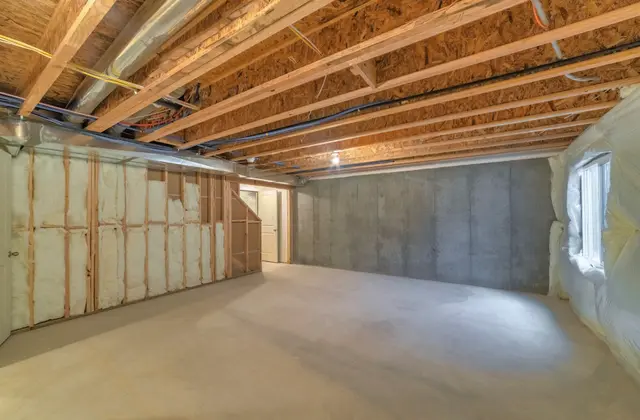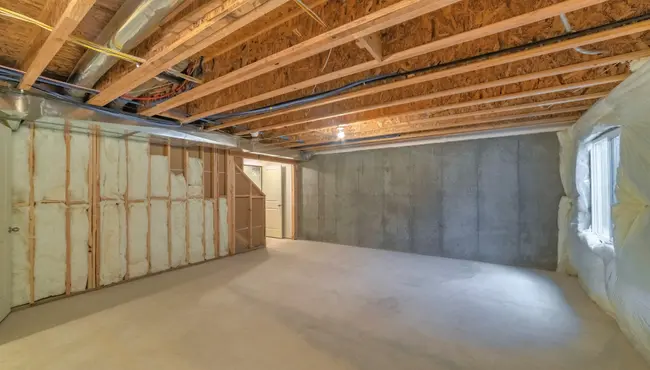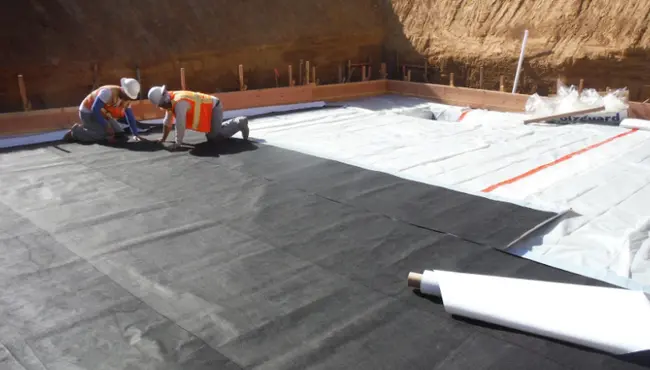
Interior basement waterproofing is an important step in maintaining the structural integrity and indoor air quality of homes.
But if you’re trying to figure out how to waterproof your interior basement, there’s a couple things you need to know.
Let’s get started.
Basics of Interior Basement Waterproofing
Waterproofing interior basement walls involves treating the inside surfaces of basements with a waterproof material as a way to prevent moisture from penetrating the walls and floors.
Unlike exterior waterproofing, which blocks water from reaching the foundation, interior waterproofing helps manage issues from within the building by addressing minor seepage and condensation.
It’s an approach particularly valuable in situations where exterior access is limited when the foundation is already at risk of water damage.
Identifying Basement Moisture Sources
But to waterproof your interior basement walls, you need to be able to identify sources of moisture. Here are some of the most common sources:
Hydrostatic Pressure
Water from saturated soil exerts pressure against basement walls, which causes moisture to seep through cracks and joints.
This pressure is a common culprit behind basement water problems and can lead to significant structural damage if not managed properly.
Capillary Action
Water can move through tiny pores in concrete by capillary action and leads to moisture accumulation on basement walls. This process, often exacerbated by poor drainage, can result in significant water damage if not addressed.
Condensation
Occurs when warm, humid air meets cooler basement surfaces, which results in water droplets forming on walls and floors. This is particularly prevalent in basements with inadequate ventilation or insulation, and it can contribute to mold growth and other health hazards.
Best Methods for Interior Basement Waterproofing

Sealants and Coatings
Masonry sealants, such as Polyguard's WM40 (formerly Home Stretch™ ICF Waterproofing Membrane) creates a flexible barrier against moisture. This 40 mils thick, self-adhering sheet is ideal for insulated concrete forms (ICF) and other foundation types, and provides robust protection against hydrostatic pressure.
BB GF (formerly Blue Barrier™ Joint Filler 2200) This product uses STPE technology to fill cracks and gaps to help ensure a seamless waterproofing system. It is particularly effective for sealing substrate imperfections, and provides superior adhesion and fire protection.
Reinforced Wall Liners
For more severe water issues, reinforced wall liners provide an effective solution. These liners, when used in conjunction with drainage systems, channel water away from the interior space to keep the basement dry and safe. They are particularly useful in areas with high water tables or where hydrostatic pressure is a significant concern.
Interior French Drains
An interior French drain system involves creating a trench around the edges of the basement floor to capture water and channel it to a sump pump.
This setup is excellent for handling groundwater infiltration and can be used alongside additional waterproofing techniques for better protection. More sophisticated versions feature gravity-fed drainage equipped with sensors that automatically identify and eliminate surplus water, to reduce the chances of flooding.
Sump Pumps
Sump pumps are effective resources in basements with significant water issues. And they work together by collecting water from French drains or directly from the basement floor and pumping it out of the building.
Essential Polyguard Products for Waterproofing
In order to use the above strategies effectively, however, you should consider exploring
Interior basement waterproofing products, such as following from Polyguard:
Home Stretch™ Detail Tape

Home Stretch™ Detail Tape tape complements the Home Stretch™ 40 Mil Membrane by providing an extra layer of protection for seams, transitions, and detail areas. It ensures a continuous, watertight seal that is critical for preventing moisture intrusion in vulnerable spots.
650 Sheet Membrane

This is a high-performance rubberized asphalt waterproofing membrane that has been designed for use in both vertical and horizontal waterproofing applications, which makes it versatile and effective. Its robust composition provides superior adhesion to a variety of substrates for a watertight seal that lasts.
Cost Considerations
Another thing to consider is that the costs of Interior basement waterproofing materials and resources can vary based on the method and materials you used.
Sealants and coatings, for example, are typically more affordable and the systems involving French drains and sump pumps may have higher costs because of the installation complexity.
Some other factors that influence costs include the severity of moisture problems, the size of the basement, and the specific products that are used.
Discover Polyguard's Waterproofing Innovations
For comprehensive waterproofing solutions that protect your basement and enhance your home's longevity, consider Polyguard's range of advanced products.
Our systems are designed to withstand the most challenging conditions to provide superior protection against water infiltration.
Contact us today for more information.













